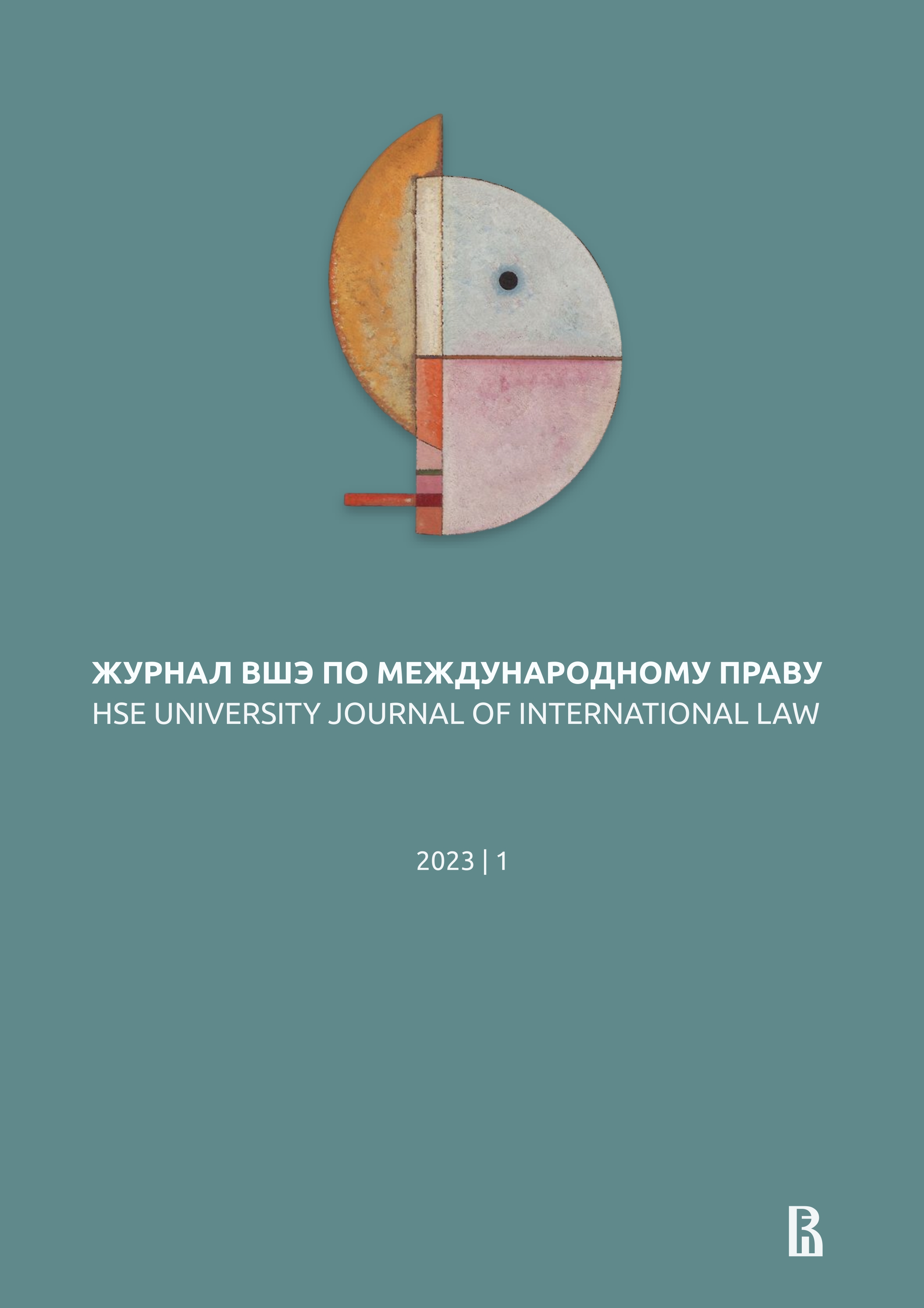EU Carbon Border Adjustment Mechanism: Legal Challenges and Relevance in Light of the Current Sanctions Regime
Abstract
Carbon Border Adjustment Mechanism (СBAM) is one of the European Union's Green Deal initiatives aimed at creating a “climate neutral” economy. The specific feature of this mechanism is the creation of additional costs when importing goods from non-EU countries, the production of which is associated with emissions of large amounts of greenhouse gases. The measure implies the reporting of carbon emissions amount and the sale of CBAM certificates depending on the amount of carbon emissions resulting from the production of imported goods. The author of the article analyses the dynamics of CBAM legal framework development as well as challenges that CBAM may face following its entry into force given the current trade restrictions introduced within the sanctions regime against Russia. The article also addresses challenges to CBAM in terms of its consistency with WTO law. The conclusion is made that new obligations for EU importers imposed by CBAM together with import bans and trade restrictions against the former major exporter of CBAM-covered goods to the EU would be very burdensome for EU importers. Furthermore, the compatibility of CBAM in its current form with WTO law non-discrimination standards is questionable; CBAM has been subject to criticism by the WTO members that are likely to be affected by the measure. This explains the recent shift of CBAM entry into force from January to October 2023 and could be a ground for further adjustment of CBAM rules.
Downloads
References
Bacchus J. (2021) Legal Issues with the European Carbon Border Adjustment Mechanism. Briefing paper No. 125, CATO Institute.
Bellora C., Fontagné L. (2022) EU in Search of a WTO-Compatible Carbon Border Adjustment Mechanism. Available at SSRN. https://doi.org/10.2139/ssrn.4168049
Boehm L., Scalamandrè C. (2023) EU-US climate and energy relations in light of the Inflation Reduction Act. Briefing, European Parliamentary Research Service.
Boklan D. (2021) Combating Climate Change under the WTO: Exploring the Relevance of Process and Production Methods. In: Boklan D., Bahri A., Weihuan Z. (eds.) Rethinking, Repackaging, and Rescuing World Trade Law in the Post-Pandemic Era, Oxford: Hart Publishing, pp. 131–148. https://doi.org/10.5040/9781509951727.ch-008
Bossche P. van den, Zdouc W. (2013) The Law and Policy of the World Trade Organization: Text, Cases and Materials, 3rd ed. Cambridge: Cambridge University Press. https://doi.org/10.1017/cbo9780511818394
Dennison S. (2022) Own coal: Why Europe could lose its green transition, European Council on Foreign Relations. Available at: https://ecfr.eu/article/own-coal-why-europe-could-lose-its-green-transition/ (accessed: 11.05.2023).
Dias A., Nosowicz A., Seeuws S. (2020) EU Border Carbon Adjustment and the WTO: Hand in Hand Towards Tackling Climate Change. Global Trade and Customs Journal, vol. 15, no. 1, pp. 15–23. https://doi.org/10.54648/gtcj2020004
Kardish C., Mäder M., Hellmich M., Hall M. (2021) Which countries are most exposed to the EU’s proposed carbon tariffs? Available at: https://resourcetrade.earth/publications/which-countries...proposed...-tarifs (accessed: 11.05.2023).
Kiseleva A., Kolesnikov Y. (2023). Novelties of Tax Regulation of Decarbonization in the Russian Federation. In: Popkova E., Sergi B. (eds.) Current Problems of the Global Environmental Economy Under the Conditions of Climate Change and the Perspectives of Sustainable Development. Springer Cham. https://doi.org/10.1007/978-3-031-19979-0_37
Leal-Arcas R. (2022). International Trade and Sustainability Perspectives from Developing and Developed Countries, Springer International Publishing. http://doi.org/10.1007/978-3-031-14068-6
Martinus M., Laopirun K. (2023) The EU’s Carbon Border Adjustment Mechanism (CBAM): Implications for ASEAN-EU Relations. Singapore: ISEAS Publishing. https://doi.org/10.1355/9789815104028
Smulders B. (2023). WTO Law’s Balance Between Trade and Global Climate and Environmental Interests: The Case of the European Union and Some Aspects of Its Green Deal. In: F. Baetens, S. van den Bogaent (eds.) The EU and the WTO: Ever the Twain Shall Meet. Marco Bronckers Liber Amicorum, Wolters Kluwer.
This work is licensed under CC BY-NC-ND 4.0


